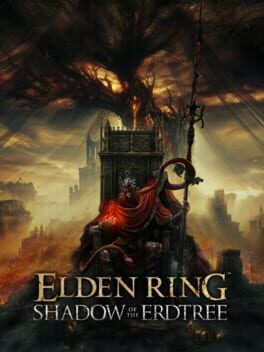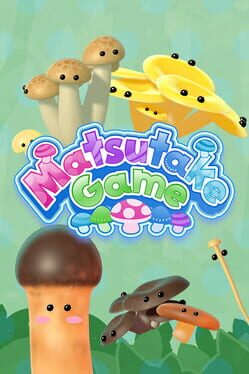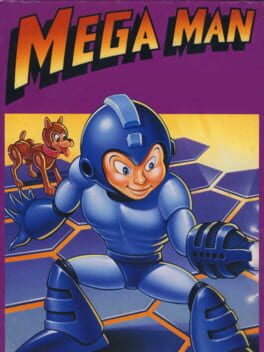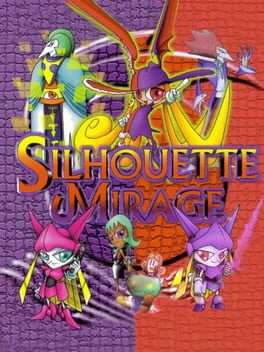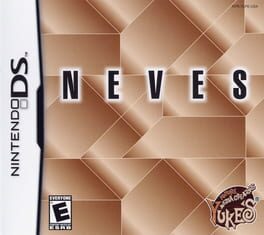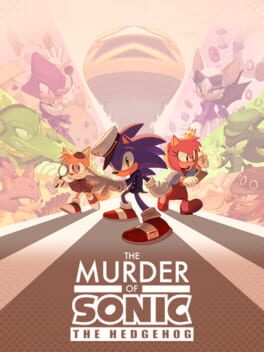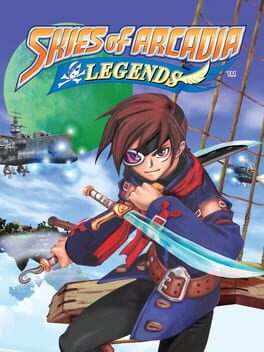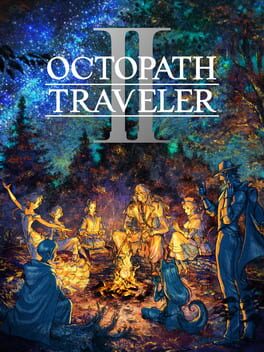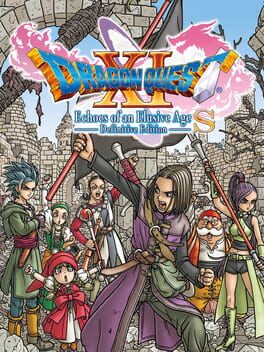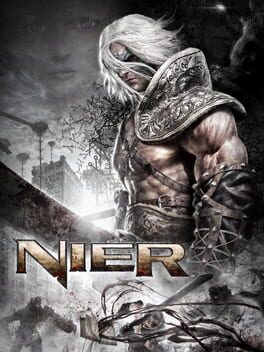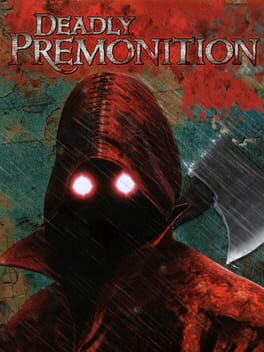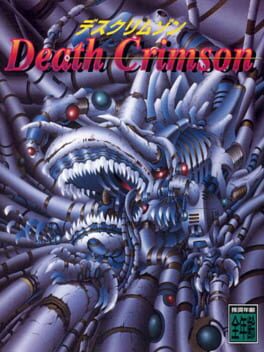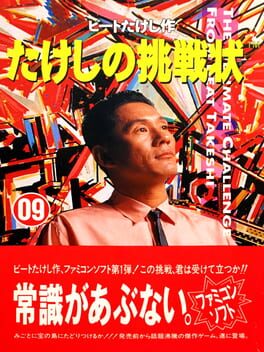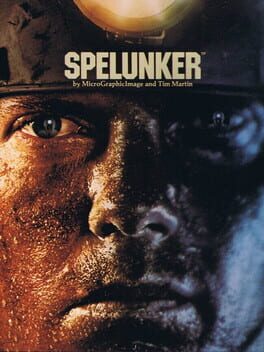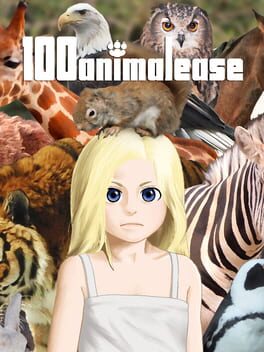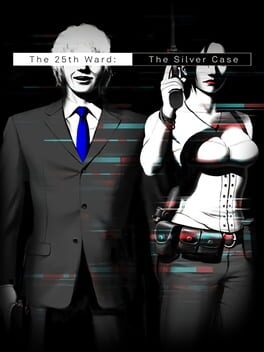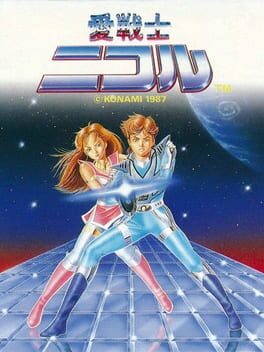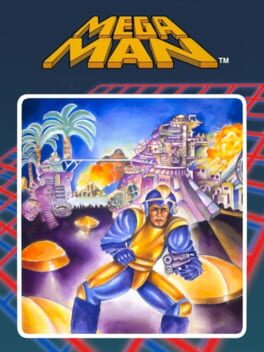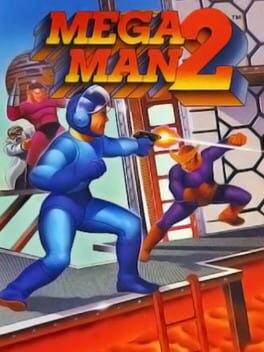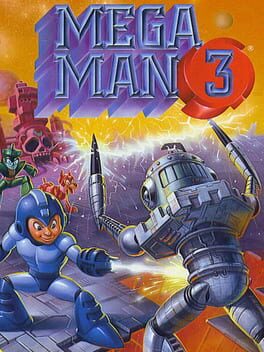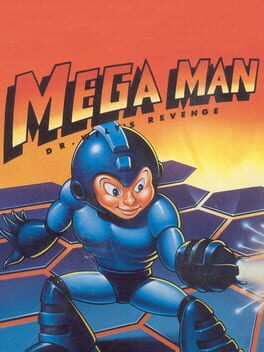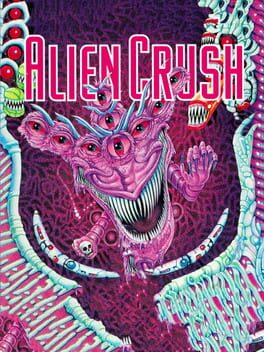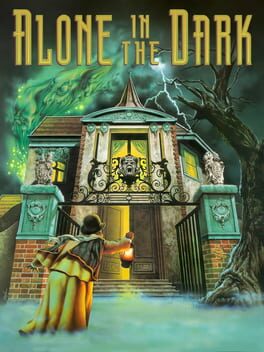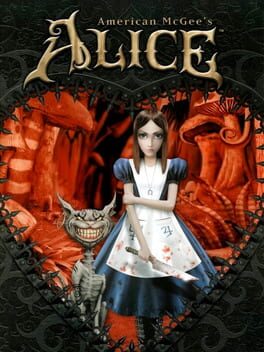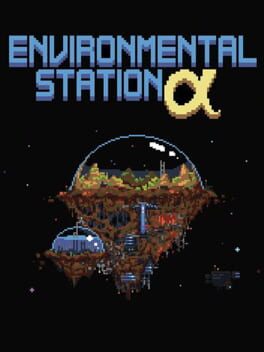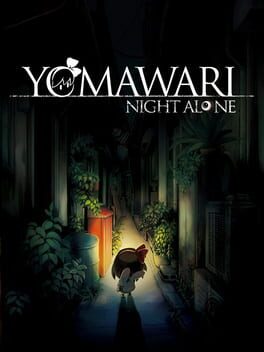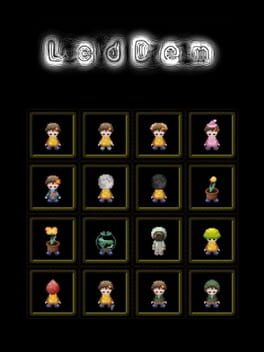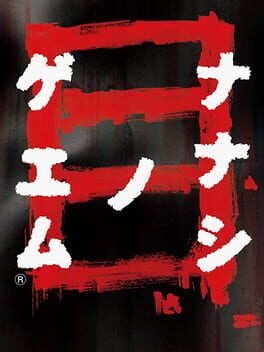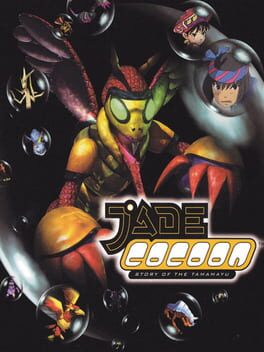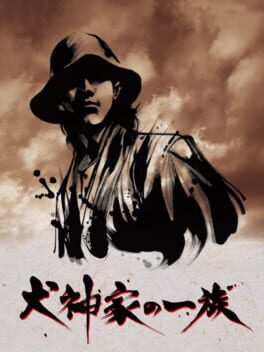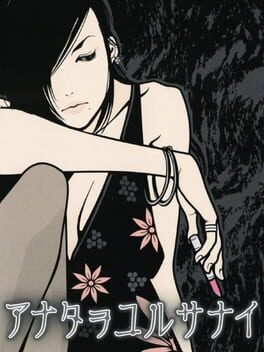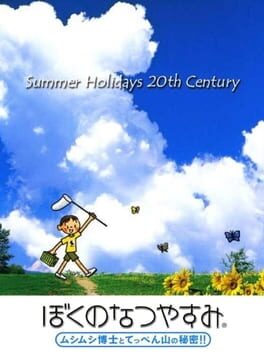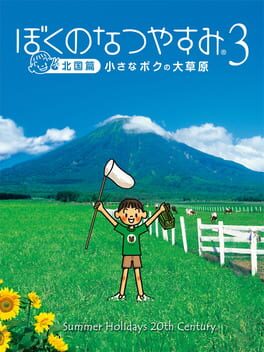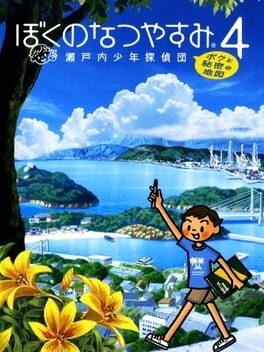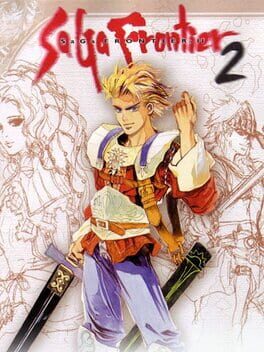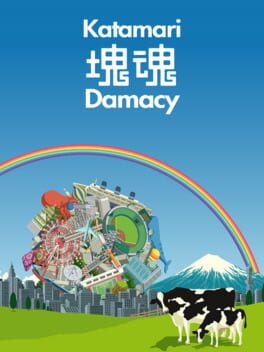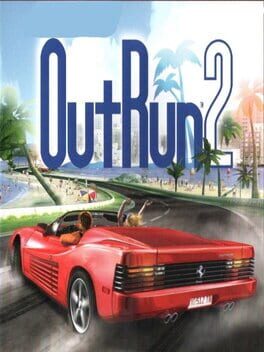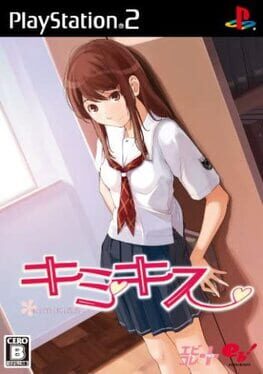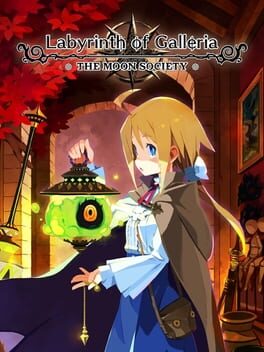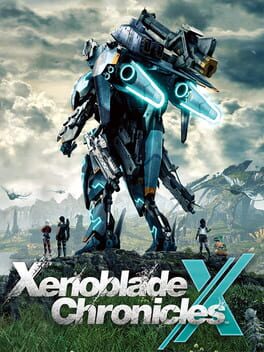10 reviews liked by rinv
Fromsoft has always done a great job with their DLC packs for the souls games, you get more for the freaks, and additionally, they’re always clarifying in some way- some fresh context for the game, or a glimpse of future games, there’s also a point, it’s never just a pack of stuff that wasn’t good enough to put in the box. The question is who the fuck wants more Elden Ring it’s like 300 hours long and what could possibly be the point of making more of it? Maybe ‘more’ is the point. In Dark Souls, the world was already half empty by the time you arrive, you go up to heaven and the lights are on but nobody's home, you go down to hell and for some reason it’s full of the the ass half of like 40 undead dragons that all try to stomp you to death, finally you find God and he’s tweaking out in a nuclear wasteland. By the time you get to Dark Souls 3 there’s so little left that they’re just microwaving all the guys you hung out with last time for another round as the world turns into a literal pile of garbage, and in the DLC of that game a painting is made of a full new world, for everyone to escape into. What is a full new world for Fromsoft, relentlessly iterative as they’ve been since the 90s?
In Elden Ring, we learn about Godwyn, he died wrong and turned into a freaky underground giant merman corpse, his corpse is also in stormveil castle, it’s also on crabs, and all sorts of inchresting places, in the Shadow Realm of the DLC his corpse can be found growing mausoleums. He died wrong because there’s multiple kinds of death, these kinds of death are metaphysically incompatible with eachother, and in the Shadow Realm you can find a ‘death suppressing pillar’ meant to constrain them all, though it does not appear to be doing a very good job. The dead who die the Godwyn way are Living in Death and are causing a ruckus, but they are not to be confused with the Undead soldiers who guard the various forts and castles you’ll murder your way through- being undead is normal, Living In Death is heretical. You might be burnt up in the ritual of the Death Rite birds if you die, ideally you’ll be given a proper Erdtree burial in the ground, maybe you’ll die only in body, or maybe only in spirit. On Top of all that, in a move of overwhelming whimsy, every kind of death eventually double dies, and manifests as a ghostly gravestone in the gravestone plains of the Shadow Realm, which slowly fades away to final oblivion. The Lore isn’t here to be solved, it’s here to induce apophenia.
The game systems are More, Demon’s Souls was a pretty straightforward ARPG, a barebones combat system and basic weakness and resistance system, if stabbing blocking and rolling didn’t work, add a status effect to your sword and that would probably do it, or maybe just summon a friend. Over time the RPG systems of these games were progressively downplayed, and honestly the combat systems were starting to get simpler and sleeker too, with only an air of more involvement. Elden Ring ratchets these things up to the nth degree, the combat systems are an order of magnitude more complex than Dark Souls 3; stamina management finally returned, with a much slower recharge rate, jumps provide an alternate and often more useful way to dodge, and can segue into powerful attacks, enemy tracking has been redialed so avoiding attacks without actually dodging is the most viable it’s been since Dark Souls 1, the weapon arts have been rebalanced to be useful, bosses have an invisible stagger threshold in addition to their life bar and deciding how to optimise those two things for each boss is an entire game unto itself. Parries are supplemented by Guard Counters, their easier to execute cousin that lets you slide big health and stagger damage into the middle of an enemy’s combo. Bosses can punish certain strategies, they can change their gameplan based on your position and aggression, they aren’t puzzles like Demon’s Souls or rhythm tests like Sekiro they are simulated opponents. If you are trying to just dodge every time they wiggle instead of actually fighting and observing them, the bosses become borderline impossible (just get behind Margit when he’s trying to feint dude its free hits). The RPG systems have likewise been intensified, what once dwindled into essentially ‘sword or magic’ has exploded into a variety of absurd numbers to play with; see how many bosses can simply be evaporated with the right status effect, many of them literally will not fight you if you use sleep. Magic is the iconic boss skipper but you don’t even need to use magic to break the game anymore, the right talismans, physicks and the right pair of greatswords and you can staggerlock almost any boss in the game, make a greatshield build that’s poisemaxxed so that you never have to do anything but block and guard counter, if you’re replaying the game or using a guide the amount of time it takes for a build to come online is incredibly short, just make a shopping list and run around the big fuck off map collecting all your goodies before you even start doing the hard stuff. When you play Elden Ring the game gives you a slider, on one side it says buttons, on the other side it says numbers, wherever you put it, the amount of game is always 100%.
One could say the direction is more western inspired than ever; pull up an image of the blue-eye knights from Demon’s Souls, the original not the Elder Scrolls Online looking ass remake, notice the tear drop shape motif, on the chest, shoulders, knees and shield, a simple shape to draw these parts together, notice the elongated shin guards and shortened looking thighs, the extremely large faulds which only really articulate at the hip. This is a mediaeval themed character but it is mecha design language, the staff of Demon’s Souls predominantly being veterans of the Armored Core series, it shines through the fantasy setting if you know how to look. Now find an image of The Black Knights of The Shadow of the Erdtree (not to be confused with the various other Black Knights of Fromsoft games) and they are wearing immaculately researched but confidently stylized 16th century italian field armour, the style of the filigree is era appropriate but the imagery reflects the scadutree, and special note must be given to gigantic rondel, a circular piece usually elided from fantasy armour, here blown up to comic proportion becoming the visual centrepiece of the chest. Many of those Demon’s Souls artists still work at Fromsoft, and many new artists have joined them, burrowing deeper into bizarre historical imagery, at last, codpiece representation thanks to the banished knights (they chickened out a little though, real examples are often massive), the bronze age Bearded Phrygian helmet appears in stylized form as the bullgoat armor helmet, the GOAT of European armor, the hounskull bascinet, appears at long last as the bloodhound knight helmet, the shape artfully messaged to be worn by a character that prowls on all fours. The face-chest of the fire giant, foes of the golden order is a common visual motif for demons in illuminated manuscripts, battling Rykard with a magic spear, a recreation of the motif of St. George and the Dragon. The faces of characters have become curiously elongated, the long noses and high thin brows of mediaeval portraiture seem uniform among the NPC faces. Anywhere you look you’ll find deeply researched historical imagery used as a jumping off point for stylish and fantastical design work.
One could say the direction is more eastern than ever. While GRRMs influence is often woefully understated, and the web of intrigue, incest and family ties that create the skeleton of the game are obvious, everything has been intensified, Fromsoft’s sometimes borderline plagiarstic reverence for Berserk has turned into something of a challenge here- to heighten their game even beyond Berserk, bigger, more monstrous, more whimsical than even that hallowed work. Knights may not look like mecha anymore but they act like them more than ever, hardly a minute passes without someone shooting a laser beam, doing a backflip, teleporting, cutting the air so fast that a dozen white sword strokes appear as the afterimages of an apparent single slash. Though the landscapes depicted have a western fantasy theme, and many comparisons have been drawn to the western romanticists, the strong two-tone landscapes and sharp atmospheric mean that wherever you turn the camera, the image has the graphic quality of a good ukiyo-e print, Hokusai’s blue and gold landscapes are everywhere you look. There’s somewhere in the realm of 150 marginally different Katanas to choose from, the Golems have detailing that recalls Jomon pottery, The Spectral Steed, Torrent, and the funny blue worm guys in the DLC could be right out of a studio ghibli film, dead Godwyn’s dream world could be straight out of Akira Kurosawa’s Kagemusha, the wide-eye doll-face face of Ranni the witch is archetypally anime. Whatever western trappings the game may wear, Fromsoft is after all, a Japanese Studio.
This is all to say, Elden Ring is the exact fundamental opposite of an empty world, it is a world so full of ideas that they cannot all exist compatibly with each other, nor can they all exist with the means of the game’s creators. Everything has a duplicate, a mirror, an opposite, a foil, a companion. Godrick the Grafted invented grafting by attaching extra limbs to himself except for his identical dipshit cousin who also invented it and is doing hard time for it in the ‘gaol’. Margit is the duplicate of himself- Morgott, and he will manifest at random in various NPCs, and the kingly Morgott, dressed in rags, is mirrored in his brother Mohg a lowly creep dressed in fine robes, who himself projects an illusory duplicate guarding the way to one of the potential metaphysical outcomes of the universe- the three fingers that present a third way. Mohg and Morgott are both Omens, horn covered freaks, cast out of society, except in the Shadow Realm, where Omens are highly esteemed. Ranni and Melina share the trait of a permanently closed and tattoo’d eye, though opposite eyes- Ranni also has a ghostly duplicate of her face floating right beside her. A Dungeon here that loops on itself, a Dungeon there that pretends to loop on itself but actually it’s copy pasted three times just to fuck with you. A Secret double world beneath your feet, a world of ghosts and death beneath that double world, a shadow world hidden in a god-egg, a nightmare world hidden in Dead Godwyn’s Dream. A set of armour for each idea, almost identical but for their colours and stats. Each Thing is shaded in turn with as many variations of that Thing as can be crammed into the game, that which cannot find a mirror in this game is reflected back on prior games and other art, the aforementioned Battle with Rykard, The Lord of Blasphemy, the latest variation of the Special Weapon vs. Mighty Monster match up that harkens back to the likes of the Storm King in Demon’s Souls, and that big guy in Dark Souls 3 whose name I forget because that game is kinda boring. The two fingers go without saying, and if you think they are a unique abomination unto themselves, rest assured there are many pairs of two fingers, and the many fingered creeperhands, and the finger-ruins of the shadowrealm, and the three fingers too. Perhaps any one of these repetitions would feel cheap, but they are vast and all consuming, art, mechanics, enemies, weapons, narrative, level design, world building, everything repeats, loops, and burrows deeper.
The festering plague consuming the land causes growth in excess, gigantic mushrooms, lakes of foul meatsoup, twisted monsters, weird bugs emerge out of the goop and worship the god of goop. Those who would oppose it try to burn it out, and their leader stops the turning of the very stars with will alone, the stars being evil monsters, these warriors can only try to curb the ceaseless discharge of More. In the Lands Between prejudice is rampant against the Misbegotten, chimerical creatures that represent the chaos and possibility of unrestricted life, hated by the people who wish to tie the world down to a single path. Each god and faction in turn are trying to set the world to their own ideas, on a literal metaphysical level. In The Silmarillion, J.R.R Tolkien’s Manifest of More as it’s known in learned circles, there were two great trees, Laurelin and Teleprion, when they were destroyed the Sun and Moon were created to take their place, respectively. In Elden Ring there’s at least three great trees, and the sun exists at the same time, though you might not notice it, so insignificant in this world, and there’s two moons too, apparently. The Ancient Dragons battle with their own descendants, the ancient dragons resemble classical fantasy dragons, 4-legged (though with the weird wrinkle of also being 4-winged) and their descendants are 2-legged Wyvern styles that is more common in modern fantasy media, the old strikes out against the new, desperate to constrain it.
Even the systems of the game are straining under the weight of its own ideas- the ancient lock-on camera, meant for knights and monsters, now to be used on gods will make you puke if you lock on to the wrong enemy (The Dancing Lion), and the camera system in general tends to you a better view of a monsters ankles than anything, so vast they have become. The 40 different progression systems, so hard to scale appropriately for all of the people coming to the DLC at radically different levels, are papered over with the scat fragment system. The venerable weapon upgrade system, meant for games where you’d use two or three weapons for the entire game maximum, fails to scale up to a game where choosing the right tool for the job is crucial, the DLC drowns you in upgrade resources to mitigate the drawbacks but it only makes you wonder ever more why they even bothered. The bonfire system, dwindling in relevance from Bloodborne onward, is fully a ghost of a system now, ill-suited to the freeform play of Elden Ring. And From’s old tricks can struggle to fill out the world, it cries out for more people to inhabit it than a smattering of NPCs, some wildlife, and zombies, life must still be suggested just outside the frame even in the midst of a contest over the metaphysical rules by which life abides.
There is often a revelatory moment in Fromsoft games, where the nature of the system you are trapped in is revealed; The Controller in Armored Core 3 was laying siege to the very system it was meant to run. The Quest of the Undead in Dark Souls was a scam being run by an old man in a desperate bid to hold on to power. In Bloodborne, slaying Rom reveals the eldritch aliens desperate for children and a connection behind the curtain. In Elden Ring, it is the reveal that the goddess Marika and her husband Radagon are the self-same person, and these two halves disagree on what should be done with the lands between; Marika shattered the Elden Ring, Radagon is trying to repair it, the godhead is at war with itself over the future of the setting, to turn back or to forge ahead. Elden Ring has no intention of resolving its contradictions, the tension in its ideas, systems, influences, the shuffle between a new direction and familiar systems were the point all along. Endlessly discursive, endlessly iterative, endlessly lost in the sauce.
In Elden Ring, we learn about Godwyn, he died wrong and turned into a freaky underground giant merman corpse, his corpse is also in stormveil castle, it’s also on crabs, and all sorts of inchresting places, in the Shadow Realm of the DLC his corpse can be found growing mausoleums. He died wrong because there’s multiple kinds of death, these kinds of death are metaphysically incompatible with eachother, and in the Shadow Realm you can find a ‘death suppressing pillar’ meant to constrain them all, though it does not appear to be doing a very good job. The dead who die the Godwyn way are Living in Death and are causing a ruckus, but they are not to be confused with the Undead soldiers who guard the various forts and castles you’ll murder your way through- being undead is normal, Living In Death is heretical. You might be burnt up in the ritual of the Death Rite birds if you die, ideally you’ll be given a proper Erdtree burial in the ground, maybe you’ll die only in body, or maybe only in spirit. On Top of all that, in a move of overwhelming whimsy, every kind of death eventually double dies, and manifests as a ghostly gravestone in the gravestone plains of the Shadow Realm, which slowly fades away to final oblivion. The Lore isn’t here to be solved, it’s here to induce apophenia.
The game systems are More, Demon’s Souls was a pretty straightforward ARPG, a barebones combat system and basic weakness and resistance system, if stabbing blocking and rolling didn’t work, add a status effect to your sword and that would probably do it, or maybe just summon a friend. Over time the RPG systems of these games were progressively downplayed, and honestly the combat systems were starting to get simpler and sleeker too, with only an air of more involvement. Elden Ring ratchets these things up to the nth degree, the combat systems are an order of magnitude more complex than Dark Souls 3; stamina management finally returned, with a much slower recharge rate, jumps provide an alternate and often more useful way to dodge, and can segue into powerful attacks, enemy tracking has been redialed so avoiding attacks without actually dodging is the most viable it’s been since Dark Souls 1, the weapon arts have been rebalanced to be useful, bosses have an invisible stagger threshold in addition to their life bar and deciding how to optimise those two things for each boss is an entire game unto itself. Parries are supplemented by Guard Counters, their easier to execute cousin that lets you slide big health and stagger damage into the middle of an enemy’s combo. Bosses can punish certain strategies, they can change their gameplan based on your position and aggression, they aren’t puzzles like Demon’s Souls or rhythm tests like Sekiro they are simulated opponents. If you are trying to just dodge every time they wiggle instead of actually fighting and observing them, the bosses become borderline impossible (just get behind Margit when he’s trying to feint dude its free hits). The RPG systems have likewise been intensified, what once dwindled into essentially ‘sword or magic’ has exploded into a variety of absurd numbers to play with; see how many bosses can simply be evaporated with the right status effect, many of them literally will not fight you if you use sleep. Magic is the iconic boss skipper but you don’t even need to use magic to break the game anymore, the right talismans, physicks and the right pair of greatswords and you can staggerlock almost any boss in the game, make a greatshield build that’s poisemaxxed so that you never have to do anything but block and guard counter, if you’re replaying the game or using a guide the amount of time it takes for a build to come online is incredibly short, just make a shopping list and run around the big fuck off map collecting all your goodies before you even start doing the hard stuff. When you play Elden Ring the game gives you a slider, on one side it says buttons, on the other side it says numbers, wherever you put it, the amount of game is always 100%.
One could say the direction is more western inspired than ever; pull up an image of the blue-eye knights from Demon’s Souls, the original not the Elder Scrolls Online looking ass remake, notice the tear drop shape motif, on the chest, shoulders, knees and shield, a simple shape to draw these parts together, notice the elongated shin guards and shortened looking thighs, the extremely large faulds which only really articulate at the hip. This is a mediaeval themed character but it is mecha design language, the staff of Demon’s Souls predominantly being veterans of the Armored Core series, it shines through the fantasy setting if you know how to look. Now find an image of The Black Knights of The Shadow of the Erdtree (not to be confused with the various other Black Knights of Fromsoft games) and they are wearing immaculately researched but confidently stylized 16th century italian field armour, the style of the filigree is era appropriate but the imagery reflects the scadutree, and special note must be given to gigantic rondel, a circular piece usually elided from fantasy armour, here blown up to comic proportion becoming the visual centrepiece of the chest. Many of those Demon’s Souls artists still work at Fromsoft, and many new artists have joined them, burrowing deeper into bizarre historical imagery, at last, codpiece representation thanks to the banished knights (they chickened out a little though, real examples are often massive), the bronze age Bearded Phrygian helmet appears in stylized form as the bullgoat armor helmet, the GOAT of European armor, the hounskull bascinet, appears at long last as the bloodhound knight helmet, the shape artfully messaged to be worn by a character that prowls on all fours. The face-chest of the fire giant, foes of the golden order is a common visual motif for demons in illuminated manuscripts, battling Rykard with a magic spear, a recreation of the motif of St. George and the Dragon. The faces of characters have become curiously elongated, the long noses and high thin brows of mediaeval portraiture seem uniform among the NPC faces. Anywhere you look you’ll find deeply researched historical imagery used as a jumping off point for stylish and fantastical design work.
One could say the direction is more eastern than ever. While GRRMs influence is often woefully understated, and the web of intrigue, incest and family ties that create the skeleton of the game are obvious, everything has been intensified, Fromsoft’s sometimes borderline plagiarstic reverence for Berserk has turned into something of a challenge here- to heighten their game even beyond Berserk, bigger, more monstrous, more whimsical than even that hallowed work. Knights may not look like mecha anymore but they act like them more than ever, hardly a minute passes without someone shooting a laser beam, doing a backflip, teleporting, cutting the air so fast that a dozen white sword strokes appear as the afterimages of an apparent single slash. Though the landscapes depicted have a western fantasy theme, and many comparisons have been drawn to the western romanticists, the strong two-tone landscapes and sharp atmospheric mean that wherever you turn the camera, the image has the graphic quality of a good ukiyo-e print, Hokusai’s blue and gold landscapes are everywhere you look. There’s somewhere in the realm of 150 marginally different Katanas to choose from, the Golems have detailing that recalls Jomon pottery, The Spectral Steed, Torrent, and the funny blue worm guys in the DLC could be right out of a studio ghibli film, dead Godwyn’s dream world could be straight out of Akira Kurosawa’s Kagemusha, the wide-eye doll-face face of Ranni the witch is archetypally anime. Whatever western trappings the game may wear, Fromsoft is after all, a Japanese Studio.
This is all to say, Elden Ring is the exact fundamental opposite of an empty world, it is a world so full of ideas that they cannot all exist compatibly with each other, nor can they all exist with the means of the game’s creators. Everything has a duplicate, a mirror, an opposite, a foil, a companion. Godrick the Grafted invented grafting by attaching extra limbs to himself except for his identical dipshit cousin who also invented it and is doing hard time for it in the ‘gaol’. Margit is the duplicate of himself- Morgott, and he will manifest at random in various NPCs, and the kingly Morgott, dressed in rags, is mirrored in his brother Mohg a lowly creep dressed in fine robes, who himself projects an illusory duplicate guarding the way to one of the potential metaphysical outcomes of the universe- the three fingers that present a third way. Mohg and Morgott are both Omens, horn covered freaks, cast out of society, except in the Shadow Realm, where Omens are highly esteemed. Ranni and Melina share the trait of a permanently closed and tattoo’d eye, though opposite eyes- Ranni also has a ghostly duplicate of her face floating right beside her. A Dungeon here that loops on itself, a Dungeon there that pretends to loop on itself but actually it’s copy pasted three times just to fuck with you. A Secret double world beneath your feet, a world of ghosts and death beneath that double world, a shadow world hidden in a god-egg, a nightmare world hidden in Dead Godwyn’s Dream. A set of armour for each idea, almost identical but for their colours and stats. Each Thing is shaded in turn with as many variations of that Thing as can be crammed into the game, that which cannot find a mirror in this game is reflected back on prior games and other art, the aforementioned Battle with Rykard, The Lord of Blasphemy, the latest variation of the Special Weapon vs. Mighty Monster match up that harkens back to the likes of the Storm King in Demon’s Souls, and that big guy in Dark Souls 3 whose name I forget because that game is kinda boring. The two fingers go without saying, and if you think they are a unique abomination unto themselves, rest assured there are many pairs of two fingers, and the many fingered creeperhands, and the finger-ruins of the shadowrealm, and the three fingers too. Perhaps any one of these repetitions would feel cheap, but they are vast and all consuming, art, mechanics, enemies, weapons, narrative, level design, world building, everything repeats, loops, and burrows deeper.
The festering plague consuming the land causes growth in excess, gigantic mushrooms, lakes of foul meatsoup, twisted monsters, weird bugs emerge out of the goop and worship the god of goop. Those who would oppose it try to burn it out, and their leader stops the turning of the very stars with will alone, the stars being evil monsters, these warriors can only try to curb the ceaseless discharge of More. In the Lands Between prejudice is rampant against the Misbegotten, chimerical creatures that represent the chaos and possibility of unrestricted life, hated by the people who wish to tie the world down to a single path. Each god and faction in turn are trying to set the world to their own ideas, on a literal metaphysical level. In The Silmarillion, J.R.R Tolkien’s Manifest of More as it’s known in learned circles, there were two great trees, Laurelin and Teleprion, when they were destroyed the Sun and Moon were created to take their place, respectively. In Elden Ring there’s at least three great trees, and the sun exists at the same time, though you might not notice it, so insignificant in this world, and there’s two moons too, apparently. The Ancient Dragons battle with their own descendants, the ancient dragons resemble classical fantasy dragons, 4-legged (though with the weird wrinkle of also being 4-winged) and their descendants are 2-legged Wyvern styles that is more common in modern fantasy media, the old strikes out against the new, desperate to constrain it.
Even the systems of the game are straining under the weight of its own ideas- the ancient lock-on camera, meant for knights and monsters, now to be used on gods will make you puke if you lock on to the wrong enemy (The Dancing Lion), and the camera system in general tends to you a better view of a monsters ankles than anything, so vast they have become. The 40 different progression systems, so hard to scale appropriately for all of the people coming to the DLC at radically different levels, are papered over with the scat fragment system. The venerable weapon upgrade system, meant for games where you’d use two or three weapons for the entire game maximum, fails to scale up to a game where choosing the right tool for the job is crucial, the DLC drowns you in upgrade resources to mitigate the drawbacks but it only makes you wonder ever more why they even bothered. The bonfire system, dwindling in relevance from Bloodborne onward, is fully a ghost of a system now, ill-suited to the freeform play of Elden Ring. And From’s old tricks can struggle to fill out the world, it cries out for more people to inhabit it than a smattering of NPCs, some wildlife, and zombies, life must still be suggested just outside the frame even in the midst of a contest over the metaphysical rules by which life abides.
There is often a revelatory moment in Fromsoft games, where the nature of the system you are trapped in is revealed; The Controller in Armored Core 3 was laying siege to the very system it was meant to run. The Quest of the Undead in Dark Souls was a scam being run by an old man in a desperate bid to hold on to power. In Bloodborne, slaying Rom reveals the eldritch aliens desperate for children and a connection behind the curtain. In Elden Ring, it is the reveal that the goddess Marika and her husband Radagon are the self-same person, and these two halves disagree on what should be done with the lands between; Marika shattered the Elden Ring, Radagon is trying to repair it, the godhead is at war with itself over the future of the setting, to turn back or to forge ahead. Elden Ring has no intention of resolving its contradictions, the tension in its ideas, systems, influences, the shuffle between a new direction and familiar systems were the point all along. Endlessly discursive, endlessly iterative, endlessly lost in the sauce.
Matsutake Game
2024
One of the worst insults you can throw at a video game is to call it an “asset swap.” To say that your work amounts to a fresh coat of paint over something that already existed is, essentially, to say you’ve done nothing. Almost as bad is to call something a “clone,” which implies that you may have done original work, but you’ve failed to iterate upon the inspiration you draw from. There are situations where these pejoratives are appropriate—the flood of “trash” releases on Steam certainly apply—but they’ve become overused to the point that they’ve lost their bite. In the wake of Suika Game’s surprise viral success, a number of games have taken its simple but genius premise (in brief: a sort of physics-based 2048 in which you combine matching objects until you can make the biggest one) and run in their own direction with it. Some are pale imitations with shoddy physics (like Big Watermelon Match), but even games that alter the calculus of gameplay by changing the shapes of the objects or the conditions of the fail state, like PuzzMiX, aren’t immune to being called cheap ripoffs. You would have a hard time criticizing Matsutake Game for being a low effort clone.
Let’s get the obvious thing out of the way: thematically, it’s absolutely nuts. The playing field appears to be a woven basket, and the objects you’re dropping into them are mushrooms; it’s as if you’re a mycology student collecting samples. You drop the adorable fungal friends, each dotted with a pair of beady eyeballs, and a squeak resembling a chew toy clenched between the jaws of a playful pup is heard. It doesn’t even take more than a couple of seconds to get annoying. The core concept is exactly the same as Suika Game, combining mushrooms until you make the titular matsutake—considered a delicacy in Japanese cuisine due to its partially endangered status. As you make your way up the chain of evolution, the name of each mushroom is announced by a cute Japanese voice. (Kikurage, shiitake, maitake, etc.) This also quickly gets overstimulating. The totality of the aesthetics are amusing, but they serve another important purpose: they’re disarming. It’s simply hard to be upset at a loss when lightning streaks across the screen, announcing “GAME OVER” in a fashion far too dramatic for a game about collecting mushrooms.
But it’s not just superficial differences that set Matsutake Game apart from Suika. The shapes of the mushrooms are irregular, in contrast to the perfectly round fruits. This makes their behavior less easy to predict, but more surprising. Chain reactions can come suddenly as pieces jostle around in ways you couldn’t possibly plan for. Most meaningfully, though, is the fact that Matsutake Game is the only Suika-like (that I’ve seen, anyway) that is actually in three dimensions. Pieces can fall behind your field of view or roll into positions you didn’t intend. You can use the extra volume to your advantage, too, filling as much space on the board as you can to set up future chains. It’s a brilliant remix of the formula, while still feeling familiar enough that there’s no sense of a learning curve. The z-axis of the playing field is so narrow that you can almost see everything, but wide enough that you feel the depth of the container.
Matsutake Game feels a world apart from Suika Game to me, though I can still imagine a casual observer saying it’s not different enough to justify existing. This is partially due to the fact that you can intuit so much from a physics game simply by looking at it; Suika-likes hide little from you, allowing you grasp the objective in only a couple of seconds. What you can’t glean from a cursory glance is how it feels. Suika Game is, itself, a clone of a Chinese mobile game called Synthetic Watermelon. It became a phenomenon because it refined the formula it copied, perfecting previously unreliable physics and wrapping it in an aesthetic that was far more pleasant to look at. Matsutake Game feels like a similarly significant leap. If you’ve only messed around in a Suika-like for a few minutes and gotten bored, they’re probably all the same to you—but if you’re really about it, there’s a whole new world to find inside that wicker basket.
Let’s get the obvious thing out of the way: thematically, it’s absolutely nuts. The playing field appears to be a woven basket, and the objects you’re dropping into them are mushrooms; it’s as if you’re a mycology student collecting samples. You drop the adorable fungal friends, each dotted with a pair of beady eyeballs, and a squeak resembling a chew toy clenched between the jaws of a playful pup is heard. It doesn’t even take more than a couple of seconds to get annoying. The core concept is exactly the same as Suika Game, combining mushrooms until you make the titular matsutake—considered a delicacy in Japanese cuisine due to its partially endangered status. As you make your way up the chain of evolution, the name of each mushroom is announced by a cute Japanese voice. (Kikurage, shiitake, maitake, etc.) This also quickly gets overstimulating. The totality of the aesthetics are amusing, but they serve another important purpose: they’re disarming. It’s simply hard to be upset at a loss when lightning streaks across the screen, announcing “GAME OVER” in a fashion far too dramatic for a game about collecting mushrooms.
But it’s not just superficial differences that set Matsutake Game apart from Suika. The shapes of the mushrooms are irregular, in contrast to the perfectly round fruits. This makes their behavior less easy to predict, but more surprising. Chain reactions can come suddenly as pieces jostle around in ways you couldn’t possibly plan for. Most meaningfully, though, is the fact that Matsutake Game is the only Suika-like (that I’ve seen, anyway) that is actually in three dimensions. Pieces can fall behind your field of view or roll into positions you didn’t intend. You can use the extra volume to your advantage, too, filling as much space on the board as you can to set up future chains. It’s a brilliant remix of the formula, while still feeling familiar enough that there’s no sense of a learning curve. The z-axis of the playing field is so narrow that you can almost see everything, but wide enough that you feel the depth of the container.
Matsutake Game feels a world apart from Suika Game to me, though I can still imagine a casual observer saying it’s not different enough to justify existing. This is partially due to the fact that you can intuit so much from a physics game simply by looking at it; Suika-likes hide little from you, allowing you grasp the objective in only a couple of seconds. What you can’t glean from a cursory glance is how it feels. Suika Game is, itself, a clone of a Chinese mobile game called Synthetic Watermelon. It became a phenomenon because it refined the formula it copied, perfecting previously unreliable physics and wrapping it in an aesthetic that was far more pleasant to look at. Matsutake Game feels like a similarly significant leap. If you’ve only messed around in a Suika-like for a few minutes and gotten bored, they’re probably all the same to you—but if you’re really about it, there’s a whole new world to find inside that wicker basket.
Mega Man
1990
I think that to truly love something, you have to go into the deepest depths with it. That's exactly what I've done here. Mega Man for DOS feels like a freshman's legally distinct computer science project, because that's not terribly far off from what it it is.
This is kind of interesting in that it was developed entirely by Stephen Rozner, an aspiring young developer who was acquired by Capcom for development of this title. Rozner somehow left Capcom during official development and, through a vaguely interesting legal loophole, was still able to release the game. Because of his departure from Capcom, Rozner completely drew up the assets and code for this, from scratch, on his own. In that way, Mega Man for DOS is among the earliest examples of a fan game.
Pretty interesting story, right? Unfortunately, that story is much more interesting than this game. It's about as amateurish as games get, with enemies that are either too short or too fast to properly land hits on, practically nonexistent level design, and 3 Robot Masters that have, luckily, been confined to the annals of history—"Voltman, Sonicman, and Dynaman." This doesn't even have music; in fact, it may not even have sound, although that could've just been the DOSBox emulator acting up. I can't finish this, as I'm neither compelled to nor am I convinced that it's possible to. I'm actually convinced that this game is fundamentally broken by design.
Shout out to Stephen Rozner, the only man whose idea of sticking it to your ex-employer is to make something completely meritless.
This is kind of interesting in that it was developed entirely by Stephen Rozner, an aspiring young developer who was acquired by Capcom for development of this title. Rozner somehow left Capcom during official development and, through a vaguely interesting legal loophole, was still able to release the game. Because of his departure from Capcom, Rozner completely drew up the assets and code for this, from scratch, on his own. In that way, Mega Man for DOS is among the earliest examples of a fan game.
Pretty interesting story, right? Unfortunately, that story is much more interesting than this game. It's about as amateurish as games get, with enemies that are either too short or too fast to properly land hits on, practically nonexistent level design, and 3 Robot Masters that have, luckily, been confined to the annals of history—"Voltman, Sonicman, and Dynaman." This doesn't even have music; in fact, it may not even have sound, although that could've just been the DOSBox emulator acting up. I can't finish this, as I'm neither compelled to nor am I convinced that it's possible to. I'm actually convinced that this game is fundamentally broken by design.
Shout out to Stephen Rozner, the only man whose idea of sticking it to your ex-employer is to make something completely meritless.
Silhouette Mirage
1997
I have like, at least 100k characters at minimum at the ready everytime to explain why I love this game; But I'll just explain it very succinctly here.
Treasure's games are designed with a 'Turing-completeness' to their greater design space. A term coined by John Carmack when describing Doom, it is essentially a game that presents infinite possibilities. The producer and creator of this game, Kafuichi went on record stating he wanted to make an action game that wasn't strictly memorizable. And even though the combat is very unbalanced, the boss AI generally being easy to throw loop, he really did succeed. Even though the game's relatively easy, any challenge the game throws at you posits some of the most emergent gameplay I've ever seen.
The attribute mechanic is very introspective and just, COOL. I love how the zero teleport analog in this game can launch enemies, at a perfect angle where they'll get subsequently juggled, and you can grab them out of mid air and pole vault off of them or use their bodies as bullet soaking shields. Everything Shyna can do in this game is additive to it's core conceit. The difficulty might be a bit lopsided to some, the last few bosses being very particular. It kind of reminds me of Cave Story, how the bloodstained sanctuary tests muscles the game didn't build, because nothing else is quite like it. I still love this game to death. It's easily the coolest game ever created.
Treasure's games are designed with a 'Turing-completeness' to their greater design space. A term coined by John Carmack when describing Doom, it is essentially a game that presents infinite possibilities. The producer and creator of this game, Kafuichi went on record stating he wanted to make an action game that wasn't strictly memorizable. And even though the combat is very unbalanced, the boss AI generally being easy to throw loop, he really did succeed. Even though the game's relatively easy, any challenge the game throws at you posits some of the most emergent gameplay I've ever seen.
The attribute mechanic is very introspective and just, COOL. I love how the zero teleport analog in this game can launch enemies, at a perfect angle where they'll get subsequently juggled, and you can grab them out of mid air and pole vault off of them or use their bodies as bullet soaking shields. Everything Shyna can do in this game is additive to it's core conceit. The difficulty might be a bit lopsided to some, the last few bosses being very particular. It kind of reminds me of Cave Story, how the bloodstained sanctuary tests muscles the game didn't build, because nothing else is quite like it. I still love this game to death. It's easily the coolest game ever created.
Neves
2007
Dissection puzzles have existed at least as long as recorded history, probably. In brief: a dissection puzzle is a set of tiles that can be assembled to create at least two (but usually more) different configurations of geometric shapes. It’s an idea so simple that variations of it appeared in at least two different parts of the world completely independent of one another. In Ancient Greece, dissection puzzles that visually illustrate the Pythagorean theorem were developed, and are believed to be instrumental to its proof as a fundamental relation of geometry. In China, a type of dissection puzzle known as the tangram has origins in oddly shaped modular banquet tables of the Song dynasty, meant to be moved around and arranged into fun shapes to entertain guests.
How exactly dissection puzzles made their way to Japan is unclear. In 1935, Hanayama Toys manufactured a dissection puzzle made of wooden blocks called the Lucky Puzzle and codified the version of the game that would remain popular in the Land of the Rising Sun to this day. Likely based on the tangram, it bears a remarkable similarity to its Chinese cousin. It’s composed of seven pieces, just like a tangram, but has an elegant self-symmetry that makes it unique from almost all other dissection puzzles.
In Japan, the Lucky Puzzle is recognizable enough that no explanation is needed. So in November of 2007, when a Nintendo DS game based on the classic brain teaser was released, they simply only needed to call it Lucky Puzzle DS. However, North America required a different strategy. Dissection puzzles reached western shores at various points in history, but failed to establish themselves as popular choices for would-be brainiacs. Rather than call it what it is, Osaka-based publisher and developer Yuke's invented the nonsense word Neves to adorn the front cover, similar to other puzzle games on the system. (Polarium, Zenses, and Magnetica, to name just a few of many examples.)
Even without the strong cultural recognition, Neves is intuitively easy to pick up and play. Following a brief tutorial, you’re ready to get right into snapping together shapes. The main attraction is the “Silhouettes?” mode, which is a digital refresh of a Lucky Puzzle picture book. You’re provided with outlines of the solution you’re tasked to replicate, and you have an unlimited amount of time to flip and rotate blocks until you figure it out. The puzzles themselves run a good gamut of difficulty, from ones you can solve at a glance to others that will have you fitting shapes together in every possible configuration and still scratching your head. On a few occasions, I even encountered a version of the famous tangram paradox, in which a construction of pieces seems to be an impossible subset of another. Very cool!
Neves does, however, ignore an important element of dissection puzzles: the ability to create your own silhouettes and challenge other players to mirror them. Perhaps this wasn’t possible due to the medium or too complicated for the type of budget the developers were working with, but Neves does attempt to offset this shortcoming with a couple of additional game modes. There are timed versions of each puzzle, as well as a “7 Steps” mode in which each block you place can’t be moved once it’s glued down.
Due to its novel form factor and tactile controls, the Nintendo DS would end up being an incredible platform for puzzle games. Untethered from the need to interface with games through the mechanical presses of buttons alone, it became possible for your hands to interact with puzzles almost as quickly as your brain could parse through them. Neves doesn’t make the experience perfectly seamless (the flipping and rotating can be a little clunky), but one need only compare to games like Tangram for the Amiga or Daedalian Opus to see how quickly things speed up. It’s a surprisingly solid offering, but then again, it does have the advantage of a few millennia of game design.
How exactly dissection puzzles made their way to Japan is unclear. In 1935, Hanayama Toys manufactured a dissection puzzle made of wooden blocks called the Lucky Puzzle and codified the version of the game that would remain popular in the Land of the Rising Sun to this day. Likely based on the tangram, it bears a remarkable similarity to its Chinese cousin. It’s composed of seven pieces, just like a tangram, but has an elegant self-symmetry that makes it unique from almost all other dissection puzzles.
In Japan, the Lucky Puzzle is recognizable enough that no explanation is needed. So in November of 2007, when a Nintendo DS game based on the classic brain teaser was released, they simply only needed to call it Lucky Puzzle DS. However, North America required a different strategy. Dissection puzzles reached western shores at various points in history, but failed to establish themselves as popular choices for would-be brainiacs. Rather than call it what it is, Osaka-based publisher and developer Yuke's invented the nonsense word Neves to adorn the front cover, similar to other puzzle games on the system. (Polarium, Zenses, and Magnetica, to name just a few of many examples.)
Even without the strong cultural recognition, Neves is intuitively easy to pick up and play. Following a brief tutorial, you’re ready to get right into snapping together shapes. The main attraction is the “Silhouettes?” mode, which is a digital refresh of a Lucky Puzzle picture book. You’re provided with outlines of the solution you’re tasked to replicate, and you have an unlimited amount of time to flip and rotate blocks until you figure it out. The puzzles themselves run a good gamut of difficulty, from ones you can solve at a glance to others that will have you fitting shapes together in every possible configuration and still scratching your head. On a few occasions, I even encountered a version of the famous tangram paradox, in which a construction of pieces seems to be an impossible subset of another. Very cool!
Neves does, however, ignore an important element of dissection puzzles: the ability to create your own silhouettes and challenge other players to mirror them. Perhaps this wasn’t possible due to the medium or too complicated for the type of budget the developers were working with, but Neves does attempt to offset this shortcoming with a couple of additional game modes. There are timed versions of each puzzle, as well as a “7 Steps” mode in which each block you place can’t be moved once it’s glued down.
Due to its novel form factor and tactile controls, the Nintendo DS would end up being an incredible platform for puzzle games. Untethered from the need to interface with games through the mechanical presses of buttons alone, it became possible for your hands to interact with puzzles almost as quickly as your brain could parse through them. Neves doesn’t make the experience perfectly seamless (the flipping and rotating can be a little clunky), but one need only compare to games like Tangram for the Amiga or Daedalian Opus to see how quickly things speed up. It’s a surprisingly solid offering, but then again, it does have the advantage of a few millennia of game design.
"A young boy had a dream. A young girl has passion. A mysterious stranger had a mission. And the world will forever know their story. As long as there are dreamers who have the courage to pursue their dreams, the world will have heroes. And as long as there is a thirst to discover the unknown, there will be new stories to tell... and new adventures to be had."
Unlike many RPGs, Skies of Arcadia is not about obtaining best-in-slot gear or about doing 9999 damage or about mastering your party composition. In many cases, a player that isn't on the game's wavelength will be tearing their hair out at the game's random encounter rate, especially because combat is frequently unsurprising. Most of the time, you'll find yourself buffing Vyse as much as possible so that he can use Pirates' Wrath or Rain of Swords over and over and over and over. But, again, while serviceable and impressively textured, combat isn't the purpose of Skies of Arcadia. It is always trying to pull something much more childlike and optimistic out of the player—wonderment and anticipation of what strange civilization or discovery lies just beyond those far off clouds. This is one of the only turn-based RPGs I've played that understands the anticipatory pull of what's around the corner in the way that something like Wizardry does. Every discovery gives way to Arcadia's immense scope, with generations of lost history brewing just beneath the fold. The game is riddled with distinct problems that don't weigh against the experience of playing it, of unfurling it, or of finding peace in it. Skies of Arcadia feels like home.
Unlike many RPGs, Skies of Arcadia is not about obtaining best-in-slot gear or about doing 9999 damage or about mastering your party composition. In many cases, a player that isn't on the game's wavelength will be tearing their hair out at the game's random encounter rate, especially because combat is frequently unsurprising. Most of the time, you'll find yourself buffing Vyse as much as possible so that he can use Pirates' Wrath or Rain of Swords over and over and over and over. But, again, while serviceable and impressively textured, combat isn't the purpose of Skies of Arcadia. It is always trying to pull something much more childlike and optimistic out of the player—wonderment and anticipation of what strange civilization or discovery lies just beyond those far off clouds. This is one of the only turn-based RPGs I've played that understands the anticipatory pull of what's around the corner in the way that something like Wizardry does. Every discovery gives way to Arcadia's immense scope, with generations of lost history brewing just beneath the fold. The game is riddled with distinct problems that don't weigh against the experience of playing it, of unfurling it, or of finding peace in it. Skies of Arcadia feels like home.
Octopath Traveler II
2023
Octopath Traveler came out at the right time, It kickstarted the HD-2D genre.
That's about all I can say about Octopath Traveler. While the game was a commercial and critical success, It felt lacking in more aspects than one.
So here comes the long awaited sequel, how does it fare to the original?
As of writing this, I don't believe I've ever played a game that improves on every single part of the original game and rises to new heights in the entire genre. It's a magical little game that has managed to hook me in from the first minute of playing the game, every single character is interesting and are fun to be around, they each have their own storylines together. It feels like everything has finally clicked.
The original game simply feels like just a proof of concept compared to this.
Octopath Traveler as a game was an interesting idea, but it lacked the narrative hook and It didn't help that the characters weren't really interesting either, the interactions between them were minimal or even non existent at times, everything felt disconnected.
The game at its core felt like a short 20 hour long classic SNES JRPG about multiple protags of which all of them had their own storylines cough Live a Live cough but stretched over to 100 hours, it felt exhausting.
This resulted in the average person picking up the game for around 20-30 hours, having their fill and putting the game down.
However Octopath 2 feels like it deserves those 100 hours and ends up making every single minute of those 100 hours insanely fun and entertaining, be it the combat, the characters or the beautiful environments.
If you were someone who loved the original, were let down by it or absolutely despised it.
I desperately urge you to give the second game a chance, there is no doubt in my mind that this game will go down as one of the greats in the entire medium.
That's about all I can say about Octopath Traveler. While the game was a commercial and critical success, It felt lacking in more aspects than one.
So here comes the long awaited sequel, how does it fare to the original?
As of writing this, I don't believe I've ever played a game that improves on every single part of the original game and rises to new heights in the entire genre. It's a magical little game that has managed to hook me in from the first minute of playing the game, every single character is interesting and are fun to be around, they each have their own storylines together. It feels like everything has finally clicked.
The original game simply feels like just a proof of concept compared to this.
Octopath Traveler as a game was an interesting idea, but it lacked the narrative hook and It didn't help that the characters weren't really interesting either, the interactions between them were minimal or even non existent at times, everything felt disconnected.
The game at its core felt like a short 20 hour long classic SNES JRPG about multiple protags of which all of them had their own storylines cough Live a Live cough but stretched over to 100 hours, it felt exhausting.
This resulted in the average person picking up the game for around 20-30 hours, having their fill and putting the game down.
However Octopath 2 feels like it deserves those 100 hours and ends up making every single minute of those 100 hours insanely fun and entertaining, be it the combat, the characters or the beautiful environments.
If you were someone who loved the original, were let down by it or absolutely despised it.
I desperately urge you to give the second game a chance, there is no doubt in my mind that this game will go down as one of the greats in the entire medium.
I can see the faint traces of the magic that people see in this game. I can hear bits of the echoes of the things that touch them or that they find charming. But for me, it came up very, very short.
I got all the way to the sand monster boss, where my game would not stop crashing, which I took as a sign for me to stop trying to force myself to have a good time.
I think I could go on at length if I could talk out loud, but having to formulate my thoughts right now in this little word box, I don't know if I can articulate why it doesn't click with me very well, but lemme give it a shot.
I've heard people compare this game to like watching episodes of a Saturday morning cartoon. People have said it's a hangout game, or a vibes game. I think that's true for those people, but the missing context there is that it's a certain type of Saturday morning cartoon; it's a certain type of hangout. It's a boy's club hangout.
DQ11 feels like the perfect, most magical game dreamed up by three 10 year old boys in 2002 from within a treehouse with a 'NO GIRLS ALLOWED' sign on it.
Just not my thing.
I got all the way to the sand monster boss, where my game would not stop crashing, which I took as a sign for me to stop trying to force myself to have a good time.
I think I could go on at length if I could talk out loud, but having to formulate my thoughts right now in this little word box, I don't know if I can articulate why it doesn't click with me very well, but lemme give it a shot.
I've heard people compare this game to like watching episodes of a Saturday morning cartoon. People have said it's a hangout game, or a vibes game. I think that's true for those people, but the missing context there is that it's a certain type of Saturday morning cartoon; it's a certain type of hangout. It's a boy's club hangout.
DQ11 feels like the perfect, most magical game dreamed up by three 10 year old boys in 2002 from within a treehouse with a 'NO GIRLS ALLOWED' sign on it.
Just not my thing.
NieR
2010
i have not played replicant ver. 1.22 at all and i imagine it may be some time before i do, but i wanted to take a moment to say a couple things about this game. mostly, i wanted to talk briefly about nier's particular place in recent games history in the west.
think of what video games looked like in america in 2010: extremely dominated by AAA western games design, to the point that many games by japanese developers were coming from increasingly disadvantaged development studios trying to keep up with what sold. jrpgs were at an all-time low—call of duty and gears of war reigned. final fantasy was as maligned as it would ever be. from japan, we saw the likes of binary domain, quantum theory... lots of cover shooters and miserable militarized shootmangames. (don't get me wrong: binary domain is cool!) there were certainly examples to the contrary, mostly niche games in staple genres, but this was the prevailing flavor of the day.
so: demon's souls? while not a massive departure from western aesthetics, it clearly signified a resurgence in fresh, inspired games from japan. i don't think it would be a significant stretch to suggest that nier may have benefitted somewhat from the renewed interest demon's souls and bayonetta elicited, but much more than that i'd say it owes its success and its legacy entirely to itself. nier came out swinging: fuck you, this is japanese games. bullet hell shooters, farming sims, references to zelda and resident evil, the sheer weirdness of it... it was a game that seemed to be proud of japanese games, unwilling to bow down to the demands of the western market. and i think the success of this approach speaks for itself. just look at how things have turned around over the last decade! and these days, how many games can be praised for this level of sea change?
think of what video games looked like in america in 2010: extremely dominated by AAA western games design, to the point that many games by japanese developers were coming from increasingly disadvantaged development studios trying to keep up with what sold. jrpgs were at an all-time low—call of duty and gears of war reigned. final fantasy was as maligned as it would ever be. from japan, we saw the likes of binary domain, quantum theory... lots of cover shooters and miserable militarized shootmangames. (don't get me wrong: binary domain is cool!) there were certainly examples to the contrary, mostly niche games in staple genres, but this was the prevailing flavor of the day.
so: demon's souls? while not a massive departure from western aesthetics, it clearly signified a resurgence in fresh, inspired games from japan. i don't think it would be a significant stretch to suggest that nier may have benefitted somewhat from the renewed interest demon's souls and bayonetta elicited, but much more than that i'd say it owes its success and its legacy entirely to itself. nier came out swinging: fuck you, this is japanese games. bullet hell shooters, farming sims, references to zelda and resident evil, the sheer weirdness of it... it was a game that seemed to be proud of japanese games, unwilling to bow down to the demands of the western market. and i think the success of this approach speaks for itself. just look at how things have turned around over the last decade! and these days, how many games can be praised for this level of sea change?
9 lists liked by rinv
by Harkov |
476 Games
by zlembke |
181 Games
by ade |
94 Games
by GoatedQuest |
105 Games
by shy |
80 Games
by BIGLOU |
76 Games
by MintyJuffowup |
125 Games
by mafu |
32 Games
